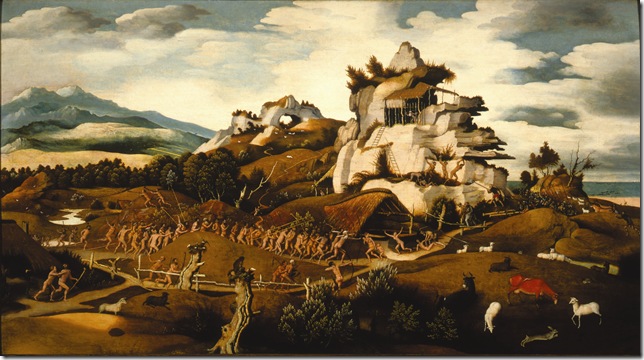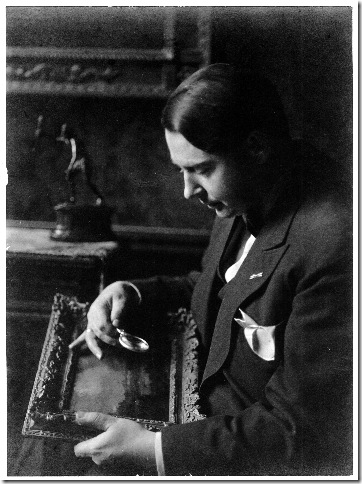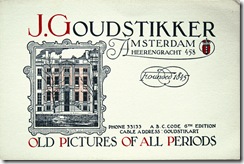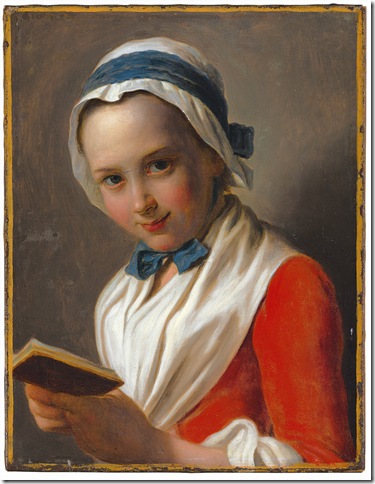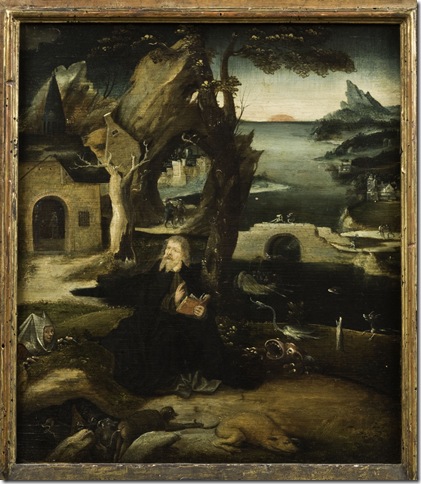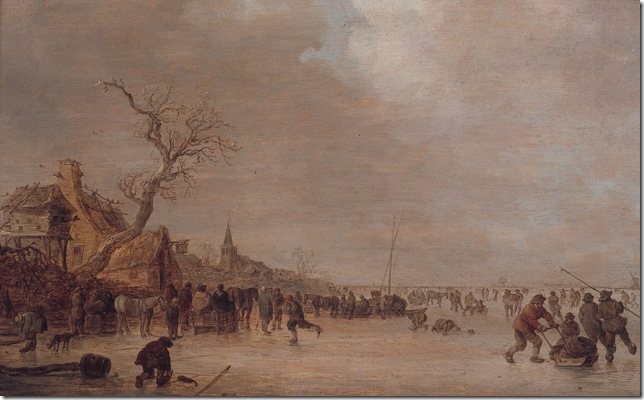Dark walls and low lights set up the mood for Reclaimed: Paintings from the Collection of Jacques Goudstikker, a traveling show now at the Norton Museum of Art through May 9.
The pieces shown here have been through a lot. They are part of one of the largest restitutions of Nazi-looted art and were only recovered a few years ago. Most of them look tired, old and would be far less intriguing if it wasn’t for the moving story behind them.
Jacques Goudstikker (1897-1940) was a well-known Dutch Jewish art dealer who is credited with bringing a wider artistic culture to Amsterdam and in turn raising the cultural reputation of the city. He specialized in Old Masters, and often shared the works in this exhibit with the public through organized shows and galas.
Goudstikker (pronounced howd-sticker) held out against the Nazi threat to the Netherlands as long as he could, then escaped on a ship bound for England in May 1940. But while on board, he fell in the ship’s hold, breaking his neck.
Back on land, the Nazis seized his collection, consisting of about 1,400 pieces. The stolen works were intended for their homes and museums, not for the world. It took Goudstikker descendants, working as the Goudstikker Provenance Project, until 2006, and after decades of legal fights, to recover the works on display here.
Unfortunately, the constant little reminders of Goudstikker’s story that accompany the display, and the family’s struggle itself, show poor faith in the very same works Goudstikker valued so much. It is possible the family and museum organizers were not as confident in the works as their owner was. And maybe they were right.
Take the story out – Goudstikker’s personal documents, his business card and his little black book — and most of the exhibit loses its appeal. But it’s also true that some paintings here would have done just fine independently of all that.
Nude Native Americans are seen defending themselves against European troops with stones and arrows in Landscape With an Episode From the Conquest of America, attributed to Jan Jansz Mostaert (1474-1552/53). Goudstikker was one of the first Dutch art dealers to promote northern Mannerist painters such as Mostaert, found here in the second room. This work of his is thought to be the first painted representation of the New World and reflects Europe’s strong opinion about the Spanish invasion. The exact place depicted is not known.
An exquisite sample of Italian Renaissance is also here with Mary Adoring the Christ Child, a tempera-on-wood tondo dated 1490-1500. The vivid colors and drapery treatment along with the familiar religious scene and circular shape of this work would have you thinking Botticelli or Michelangelo at first. But this depiction of the loving Madonna contemplating her child is actually attributed to Filippino Lippi (1457-1504), a Florentine painter and son of Fra Filippo Lippi.
Among the 12 works in the third room are two girls who seem quite aware of the seductive power of their youth, freshness and health. Both paintings are courtesy of Pietro Antonio Rotari (1707-1762), who is known precisely for paintings of anonymous, pretty young women. Just look at them. Rosy cheeks. Playful smiles. The Frivolous Girl gives us a girl perfectly comfortable with herself — and her bust. She wears a collar and flowers in her hair. Next to her, a bonnet and white shawl adorn a seemingly modest girl. She is holding a book but doesn’t convince us. That look in her eyes contradicts the title: The Virtuous Girl.
If we are curious to know what a rigid palette can manage to do, we have only to look at the 1641 Winter Landscape With Skaters by Dutch painter Jan Josefsz van Goyen (1596-1656). This is one of many works that made van Goyen one of the most famous and prolific landscapists of the Dutch Golden Age. He was known for his river views, seascapes and winter scenes. This one is an oil piece on panel featuring variations of cream colors that make the sky seem like a breath of fresh air, literally. Its subtle blues and whites are the only break from the soft earthy tones that are never allowed to get out of control. A harmonious atmosphere with dynamic figures is the result.
One of the instances in which text, rather than color and composition, steal the attention is The Adoration of the Shepherds, by Flemish painter Joachim Beuckelaer (1533-1574). The Provenance project discovered the 1564 painting at the 2006 European Fine Art Fair in Holland. When photographs of the painting were compared with a photograph in the Goudstikker archive, they revealed identical cracks, which proved they were the same painting.
A looted piece known to have been destined for Hitler’s proposed museum in Linz, Austria, is Louise-Marie Gonzaga de Nevers, by Ferdinand Bol (1616-1680), a pupil of Rembrandt. Supposedly it depicts the queen of Poland in 1646. Here she looks uncomfortable in a pose little respectable for a future queen.
Interesting pieces, all of them, but how good are they as art? It’s impossible to separate the worth of these works from their story, and it starts with the title of the exhibit itself: Reclaimed.
From that moment on, each piece of art is smothered in context and is left no chance to make an impression simply for what it is. And we, in turn, have been robbed of the right to decide: Do we really want to be here? Try walking out without feeling guilty.
Regal portraits, still lives and religious themes in all sizes, by different artists and different styles, are pleasant to look at but nothing we haven’t seen before. As with our elders, we put up with them because we are told they deserve respect and admiration and because we have no choice.
Reclaimed is an OK show with a great story. More than anything, it’s a show about the art of exhibiting. Watch how pieces otherwise thought of as nice but flat suddenly become important and dramatic when tied to the tragic tale of Jacques Goudstikker and the leading villains of the 20th century.
Gretel Sarmiento is a South Florida-based freelance writer.
Reclaimed: Paintings From the Collection of Jacques Goudstikker is at the Norton Museum of Art through May 9. Hours are 10 a.m.-5 p.m. Tuesdays through Saturdays, 1 p.m. to 5 p.m. Sundays. Admission: $12, adults; $5, ages 13-21. Call (561) 832-5196 or visit www.norton.org.
